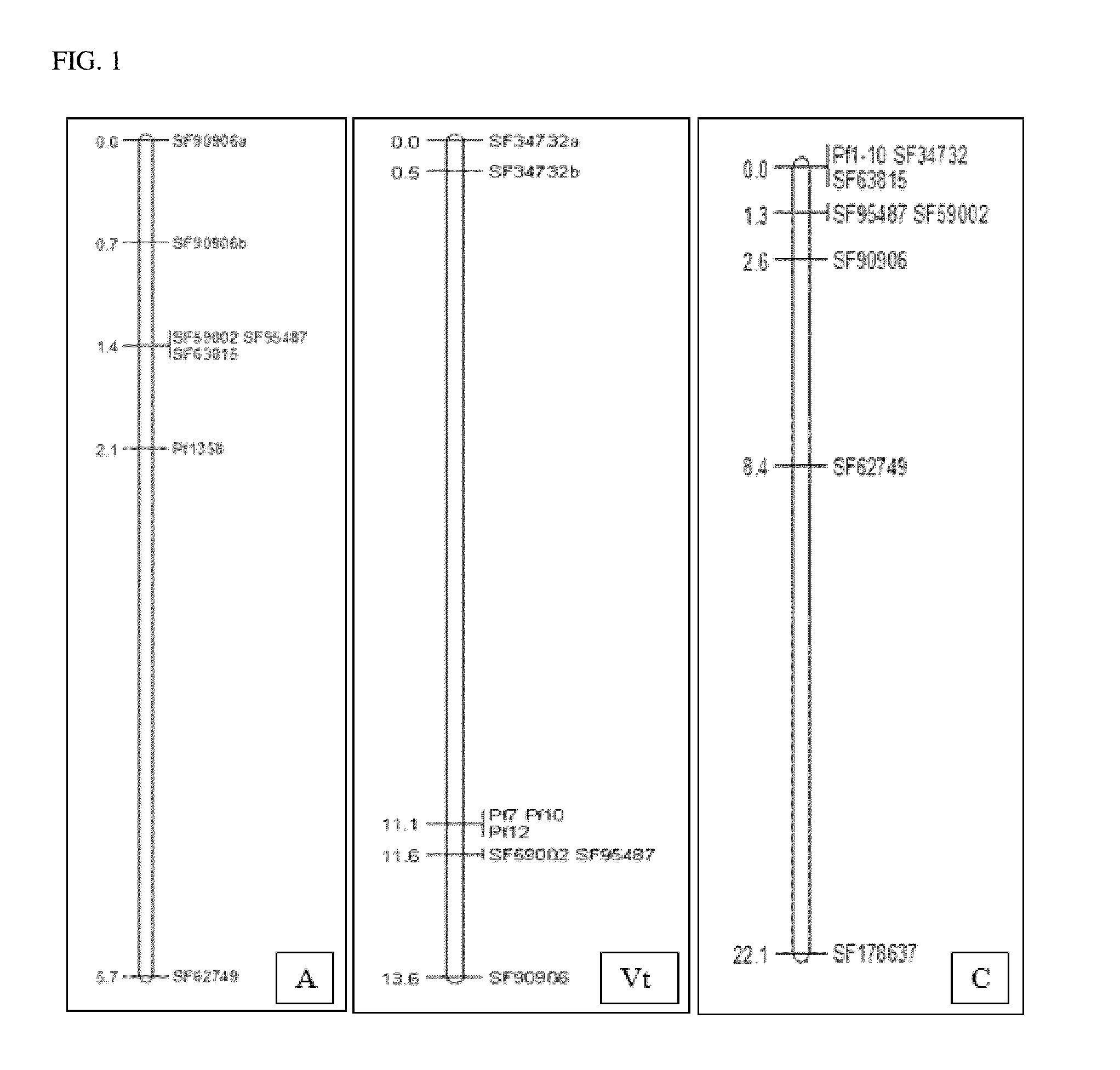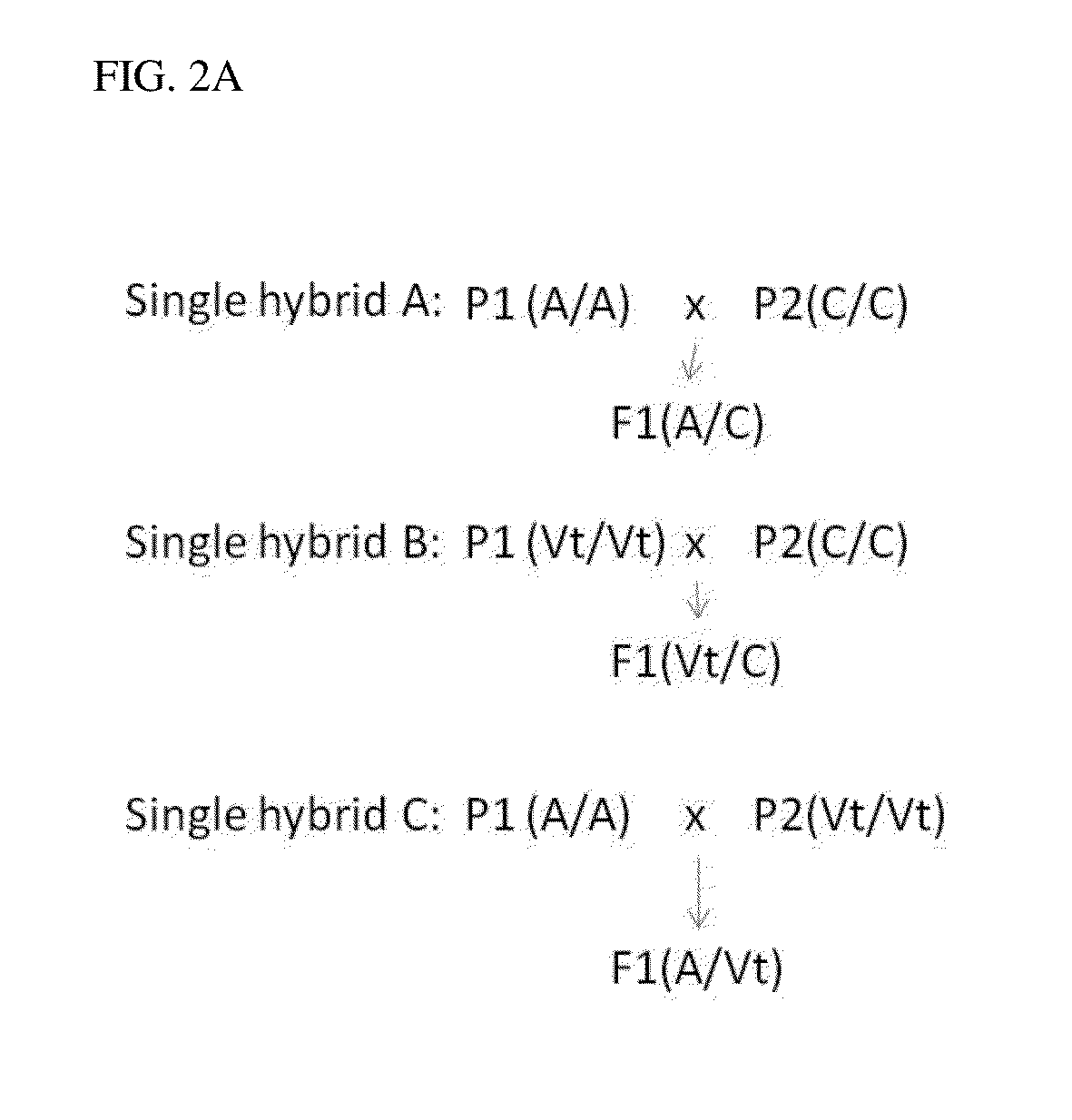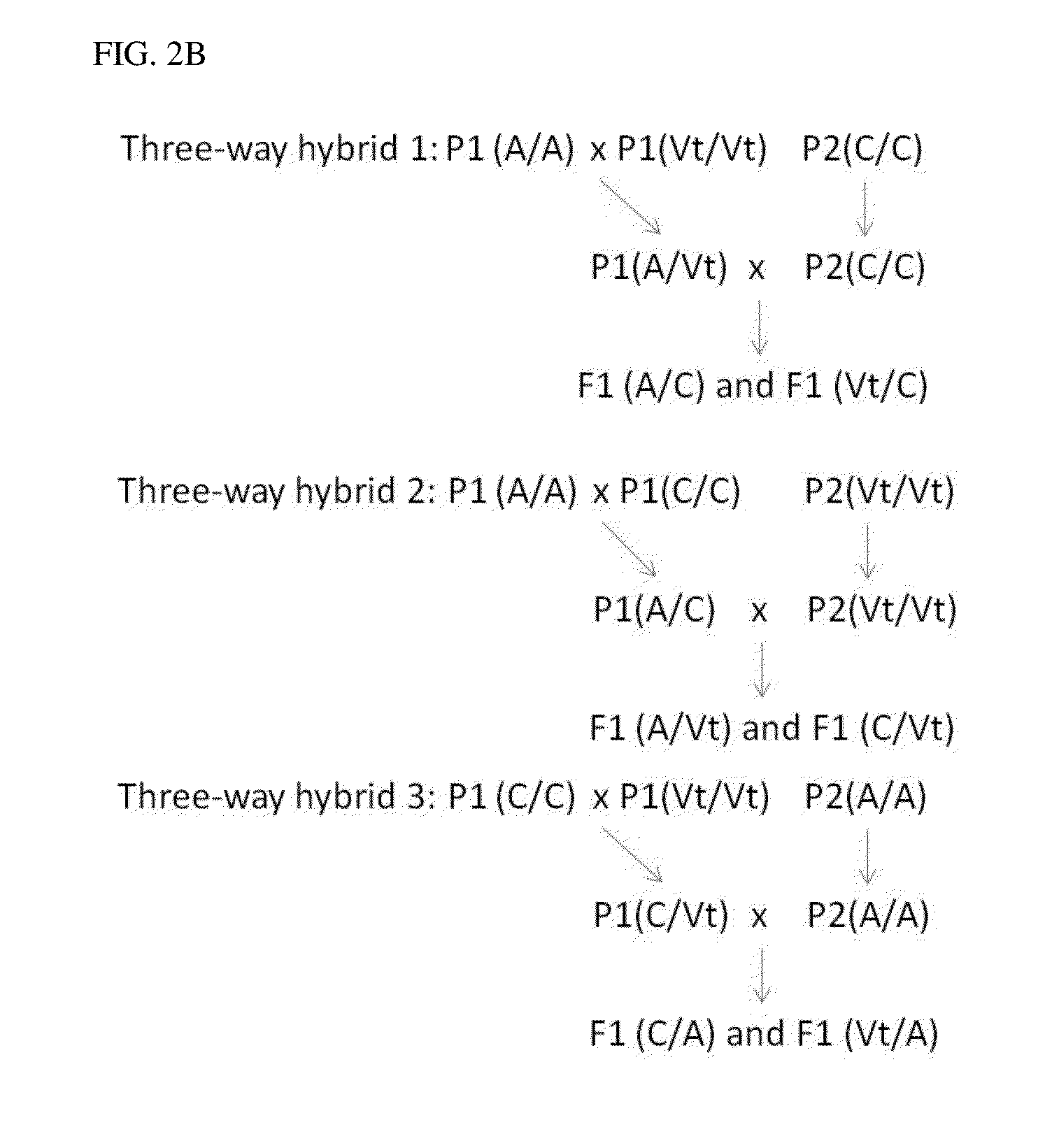Compositions and methods for peronospora resistance in spinach
a technology of peronospora and composition, applied in the field of plant breeding, can solve the problems of incomplete resistance to dm in spinach and race specificity, and achieve the effect of broad-spectrum resistan
- Summary
- Abstract
- Description
- Claims
- Application Information
AI Technical Summary
Benefits of technology
Problems solved by technology
Method used
Image
Examples
example 1
Identification of Novel Resistance to DM races in Spinacia oleracea
[0105]A screen was performed on S. oleracea germplasm using the disease assay described in Example 5. S. oleracea accessions in an internal genebank were screened. In addition, publicly available spinach hybrids that were either fully susceptible, or carried a combination of resistance specificities were included in the trial as susceptible and resistance checks. Infection was performed with Peronospora farinosa f. sp. spinaciae (Pfs) races 7, 8, and 10-14 to complement historic data on races 1-6. Race 9 is no longer present in the field. In addition to strains with a race designation, a resistance-breaking isolate, collected in California (US) in the spring of 2013 was included. This isolate is currently referred to as UA4712 by the International Working Group on Peronospora and is a probable candidate for race Pfs 15.
[0106]The response of control entries to infection is presented in Table 1 and is consistent with ...
example 2
Mapping Resistance to DM
[0108]Irish et al. (2008) identified a co-dominant marker, designated Dm-1, which was closely linked to the resistance locus RPF1 from S. oleracea. The genetic distance between Dm-1 and RPF1 was estimated to be 1.7 cM. Further efforts to fine-map the Dm-1 marker relative to the RPF1 locus generated sequence resources in the vicinity of the Dm-1 marker, but did not result in cloning RPF1 (Yang et al., Initial fine-mapping of the spinach downy mildew resistance locus RPF1, University of Arkansas, 2013, 102 pages; 1536814). Given the absence of a causal polymorphism and the distance between Dm-1 and RPF1, association may be lost during backcrossing or recurrent selection. Therefore, markers flanking resistance on both sides were needed for tracking resistance alleles and further fine-mapping.
[0109]Spinach lines carrying one of the three resistance alleles, A, Vt, or C, were individually crossed to a line that exclusively harbored resistance to races Pfs 1-4. Res...
example 3
Quantitative Effects of DM Resistance Alleles
[0111]The genotype and phenotypes collected in Example 2 were used in a quantitative analysis with mapQTL, applying standard interval mapping settings (Van Ooijen, 1996). A major locus for resistance to Peronospora farinosa f. sp. spinaciae race 8 was detected in the mapping population segregating for allele A. Evidenced by a LOD peak of 57.51, the trait was highly associated with markers derived from scaffolds SF59002, SF95487, and SF63815 (Table 2). The locus appeared to have a major effect, explaining 97.2% of the observed variance.
TABLE 2Quantitative analysis of resistance allele A to Pfs race 8.maploditermu_Amu_Hmu_Bvar% expladddomlocus———————————040.53494.4444502.6315892.06579245.90641.46199SF90906a0.746.42497.0588502.6315863.802294.447.21360.154799SF90906b1.457.514100502.6315832.005797.248.6842−1.31579SF590021.457.514100502.6315832.005797.248.6842−1.31579SF954871.457.514100502.6315832.005797.248.6842−1.31579SF638155.731.74494.11765...
PUM
| Property | Measurement | Unit |
|---|---|---|
| Electrical resistance | aaaaa | aaaaa |
Abstract
Description
Claims
Application Information
 Login to View More
Login to View More - R&D
- Intellectual Property
- Life Sciences
- Materials
- Tech Scout
- Unparalleled Data Quality
- Higher Quality Content
- 60% Fewer Hallucinations
Browse by: Latest US Patents, China's latest patents, Technical Efficacy Thesaurus, Application Domain, Technology Topic, Popular Technical Reports.
© 2025 PatSnap. All rights reserved.Legal|Privacy policy|Modern Slavery Act Transparency Statement|Sitemap|About US| Contact US: help@patsnap.com



